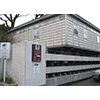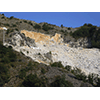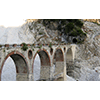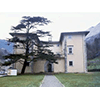Versilia - Along the Marble Roads

Certainly one of the most characteristic elements of the Versilia landscape consists of the Apuane Alps with their rugged profile that stands out against the sea. Destination of speleologists and alpine climbers, this splendid territory owes its fortune to the numerous marble quarries active since the time of Roman rule.
The proposed itinerary starts out from Carrara where, in the locality of Stadio, you can visit the Museo Civico del Marmo whose six sections document the various aspects tied to the culture of marble, from the history of the territory to the technical applications tied to this material.

Officially founded in 1982 by initiative of the Commune of Carrara, the Museo Civico del Marmo is the city’s first public museum instituted to document and valorise local marble culture. Its foundation was preceded by studies and research promoted by the Town Administration as of 1977, concerning the cataloguing and recovery of the territory’s cultural heritage. The museum is housed in the former headquarters of the Chamber of Commerce of Carrara, which in the Early Seventies hosted the National Exhibition of Marble, and from which the first nucleus of the Museum’s marble collection was born. The museum collection is formed by 310 samples of the most important marbles, granites and ornamental stones of Italy, and by the most significant types of marble and granite currently extracted in the world.
Organised into six sections (Roman Archaeology, History of the Territory, Industrial Archaeology, Technical Applications, Plaster Casts, and Modern Sculpture), the layout presents 114 types of marble quarried in the Apuane Alps, the old topographic maps, drawings and archaeological maps of Luni and its territory, aerial and infrared photographs. Particularly interesting are the reproduction of the Peutingerian Table and the reconstruction in marble of the Salvioni epigraph, the oldest written document in the history of Carrara. The machinery on show includes several noteworthy exhibits: a nineteenth-century wagon of a steam tractor to transport blocks, a wagon of the Marble Railway, one of the first pneumatic hammers and two old screw hoists, one of which dates to the 18th century. An exhibition space inaugurated in 1994 centres on the substitutive restoration project to conduct on the Cathedral of Carrara. The intention is to replace the damaged parts of the structure with philological copies made of marble, moving the original to the museum. Also on display are 25 sculptures belonging to the Commune of Carrara.
Recently a multimedia area was created in order to explain, using new audio-visual and informatic technologies, the many aspects of the millennial culture of marble developed in the Carrara's territory, with particular reference to geological, artistic and social history of the area.
(Anna Toscano)
An excursion to the nearby quarries, situated past the town of Miseglia, some 5 km from Carrara, lets you admire the particular beauty of the marble field.

The Miseglia field is one of the three most important fields of the Luni region, along with Torano and Colonnata. Sited along the road that connects Carrara to Miseglia, it consists of two quarry sections called Canal Grande and Fantiscritti, formed by various types of marble, mainly vulpinite (a type of marble typical of the Apuane Alps, veined and from grey to turquoise in colour).
Already known to the Romans, as testified by several finds of ancient cutting sites, this field was again used in the Middle Ages. Among the quarries of Miseglia, the most illustrious from the historiographic viewpoint are those of Fantiscritti. This name, derived from a Roman relief of the early 3rd century A.D. depicting three divinities, is attributed to the area that lies between Bocca di Canalgrande and Mount Torrione, formed by a steep gulley particularly rich in large-grained ordinary white marble of an azure hue.
Along the road leading to the quarry of Fantiscritti, one can admire three matching bridges, known as the bridges of Vara, which were the viaducts of the old Marble Railway.
(Anna Toscano)
During the visit, visitors will not fail to note the remains of the marble railway, an admirable feat of engineering, created to facilitate transporting the quarried blocks.
Turning back towards Carrara, take SP446DIR/SS446DIR for less than 10 km where, near Massa, you turn onto SS1. From here, proceed past Montignoso and, in the locality of Ripa, turn onto SP9 and proceed for 10 km more until you reach Serravezza where Cosimo I built a palazzo that is today headquarters of the Museo del Lavoro e delle Tradizioni Popolari della Versilia Storica.

The purpose of the marble railway begun in 1871 was to render transporting marble from the quarries to the port at Marina di Carrara more practical. For the remarkable technical solutions adopted along its 22-kilometre line and 10-kilometre junctions, it was at that time considered an engineering product of great importance. Quite remarkable are the impressive viaducts over Miseglia, the tunnel between Fantiscritti and Ravaccione dug into the marble, the bridges of Vara and the iron bridge of Vezzala. The railway began operating in 1890 and was abandoned in 1964. Still today, however, a part of its daring course can be admired.
(Graziano Magrini)
The marble quarries whose activity the Museum documents, are quite visible on the slopes of Monte Altissimo, as you travel the road by the same name northbound.

The Palazzo Mediceo di Seravezza is a site that recalls many themes tied to technology. On order of Cosimo I de’ Medici, it was built between 1560 and 1564 by Bartolomeo Ammannati or, as recently argued for the resemblance of several architectural elements with the Villa of Artimino, by a young Bernardo Buontalenti. The building was erected in an area particularly important for extracting minerals and quarrying marble from Monte Altissimo. The sovereign was thus able to have a close-up picture of the extracting activity which he himself had relaunched. On many occasions, the palazzo hosted the grand duke and duchess who loved to spend summers here. Peter Leopold of Lorraine reserved part of the rooms for the warehouses and administrative offices of an ironworks, still visible beside the palazzo, and built around 1786 along the torrent Ruosina. In 1835, on closing the ironworks, the villa returned to be a holiday spot for the grand-ducal family. With the Unification of Italy, it was transferred to the State, which in 1864 gave it to the Commune of Seravezza. Today, after serving first as a penitentiary and then as Town Hall, the building hosts various cultural organisations including, on the second floor, the Museum of Work and Folk Traditions in Historical Versilia.
Open to the public as of 1996, the Museum was instituted by the Town Council of Seravezza in 1980 to trace back and illustrate the production activities of the area and their historical evolution. A particularly important source, thanks to the quarries of Monte Altissimo, the marble industry is documented with a series of utensils, machines and machine models that illustrate the techniques of quarrying, transporting and milling, practised in the area. The exhibition of several tools utilised in ironworks and craftsmen’s workshops also illustrates two other important activities of Medici Versilia: mining, which has an ancient origin, and ironworking. Finally, objects tied to domestic activities are also exhibited, such as weaving and various kinds of farming equipment, used both in the mountains and on the plains. The collection is accompanied by an abundance of photographs and cards illustrating the function of the various objects on show. The work tools can be dated from the late 18th century to the mid 20th century.
(Graziano Magrini)
****************************
Texts by Elena Fani
English translation by Victor Beard
Last update 19/gen/2008



 = libraries and archives
= libraries and archives  = scientific research centers
= scientific research centers  = memorial places of scientists
= memorial places of scientists = public health places
= public health places = places of science and worship
= places of science and worship = places of technology
= places of technology  = museums and collections
= museums and collections  = villas and gardens of science
= villas and gardens of science


